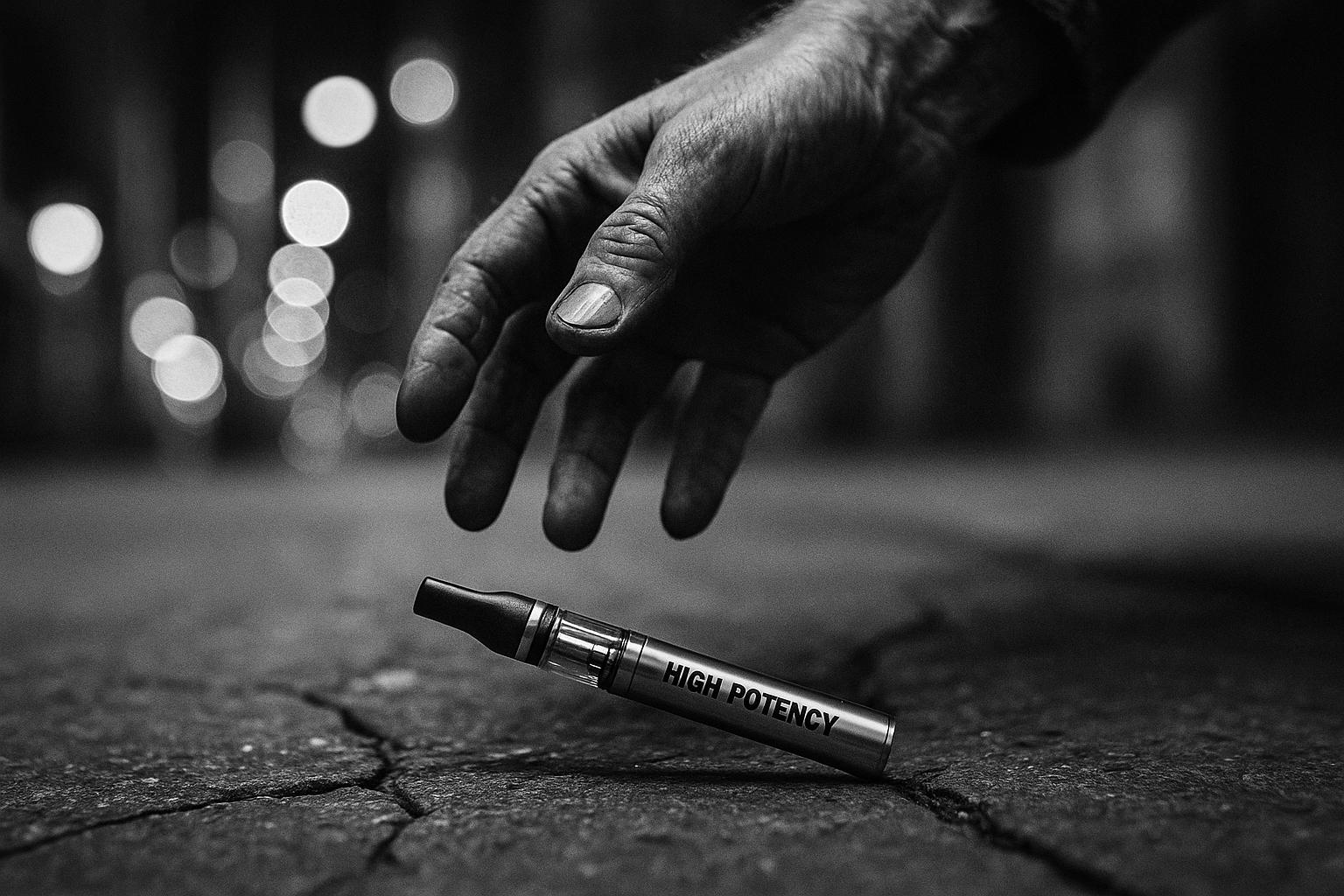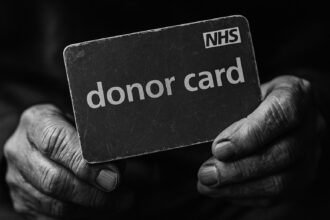Clinicians report growing numbers of cannabis‑induced psychotic episodes concentrated among daily users of high‑THC products, prompting calls for health‑led interventions, better addiction services and limits on the most harmful strains even as national use declines.
Cannabis-induced psychosis is emerging as a growing clinical concern in the UK, even as overall use of the drug falls. Speaking to the Daily Mail, Dr Niall Campbell, a consultant psychiatrist at the Priory rehabilitation centre, warned that he has seen “a visible rise in the number of people needing intensive support for psychosis as a result of cannabis use”, and blamed easy online access to high‑potency “skunk” varieties. According to that report, what can begin as transient paranoia after smoking a few joints can escalate, and in some cases lead to persistent psychotic states with severe consequences for mood and suicide risk.
Official prevalence figures, however, show a more complex picture. The Office for National Statistics estimates that about 2.3 million people aged 16 to 59 reported using cannabis in the year to March 2024 — roughly 6.8% of that age group — and that overall frequent use has fallen compared with a decade earlier. The contrast between falling overall use and rising treatment demand for cannabis‑related psychosis is at the heart of current concern.
Medical research helps to explain why a smaller number of users could be responsible for a disproportionate share of harm. A multicentre case–control study across European cities found that daily use, and in particular daily use of high‑potency cannabis, is strongly associated with first‑episode psychosis — in some analyses approaching a five‑fold increased risk. Researchers at King’s College London have also reported that frequent use raises the likelihood of clinical psychosis independently of inherited genetic risk, and they have emphasised the particular danger posed by products with high THC content.
Clinically, substance‑related psychosis presents in the familiar ways: hallucinations, delusional thinking and dissociation, and can be triggered or worsened by intoxication and by withdrawal. NHS guidance notes that while substance‑induced psychosis will remit for many people, it can persist in others and requires careful medical assessment. The pattern seen in cohort studies is troubling: patients with first‑episode psychosis who continue to use cannabis tend to have more severe symptoms, poorer social functioning and worse outcomes at follow‑up than those who stop.
Those longer‑term follow‑up studies also underline an important treatment message: continued cannabis use after a psychotic episode predicts a poorer course of illness. The EDEN study of first‑episode patients found that ongoing consumption was associated with worse symptomatic and functional outcomes at six and 12 months, reinforcing the need to integrate addiction treatment with early psychosis services. Public‑health researchers have argued that reducing the availability of high‑potency products could materially lower rates of first‑episode psychosis in settings where such products are common.
Policy debate is beginning to catch up with the clinical evidence. The London Drugs Commission this year recommended a shift away from criminal penalties for natural cannabis and called for an expanded public‑health response that reduces reliance on stop-and‑search, improves education and strengthens treatment services for those harmed by cannabis. The London mayor has signalled support for some of those recommendations, reflecting an appetite — at least in the capital — for a different balance between criminal enforcement and health‑led interventions.
Taken together, the clinical warnings, epidemiology and research suggest a targeted public‑health problem rather than a simple surge in recreational use: stronger products and persistent use appear to be concentrating harms among a subset of users. Clinicians and campaigners say the response should combine improved access to addiction and mental‑health services, clearer public messaging about the risks of daily and high‑THC use, and policy measures to limit the most harmful products — while recognising that for many occasional users the risk profile is lower. As Dr Campbell told the Daily Mail, what begins with a few joints can escalate, and for a minority the consequences can be long lasting — a reminder that policy and services must keep pace with changes in the market for the drug.
 Reference Map:
Reference Map:
Reference Map:
- Paragraph 1 – [1]
- Paragraph 2 – [1], [2]
- Paragraph 3 – [3], [4]
- Paragraph 4 – [5], [6]
- Paragraph 5 – [6], [3]
- Paragraph 6 – [7], [1]
- Paragraph 7 – [1], [4], [2]
Source: Noah Wire Services
- https://www.dailymail.co.uk/health/article-15007463/cannabis-induced-psychotic-episodes-UK-potency-strains-increased.html?ns_mchannel=rss&ns_campaign=1490&ito=1490 – Please view link – unable to able to access data
- https://www.ons.gov.uk/peoplepopulationandcommunity/crimeandjustice/articles/drugmisuseinenglandandwales/yearendingmarch2024 – This Office for National Statistics report presents Crime Survey for England and Wales data for the year ending March 2024. It states that an estimated 6.8% of people aged 16 to 59, approximately 2.3 million individuals, reported using cannabis in the last year, down from around 7.6% the previous year. The publication breaks down frequency of use, showing fewer frequent users than a decade earlier, and provides demographic patterns and trends for other drugs. The release emphasises changes over time and regional variations, and serves as an official, comprehensive source for drug prevalence and related statistics in England and Wales.
- https://pmc.ncbi.nlm.nih.gov/articles/PMC7646282/ – This multicentre case–control study, reported through an open access journal article, examined the contribution of cannabis use to variation in incidence of psychotic disorder across several European sites. It found that daily cannabis use is associated with increased odds of developing psychotic disorder and that daily use of high‑potency cannabis confers the highest risk, approaching a fivefold increase in some analyses. The authors calculated population attributable fractions indicating that removing high‑potency cannabis could substantially reduce first‑episode psychosis incidence in settings such as London. The paper discusses public health implications of increasing availability of stronger cannabis varieties.
- https://www.kcl.ac.uk/news/cannabis-use-increases-risk-of-psychosis-independently-from-genetic-predisposition – This news article from King’s College London summarises research showing that frequent cannabis use raises the likelihood of clinical psychosis independently of genetic predisposition. Using large datasets the researchers calculated polygenic risk scores and found that lifetime frequent cannabis use, particularly daily use of high‑potency products, was associated with greater chances of psychosis even after accounting for genetic risk for schizophrenia. The piece defines high‑potency cannabis by THC content thresholds and highlights implications for identifying individuals at higher risk and informing prevention strategies and public health policy.
- https://www.nhs.uk/mental-health/conditions/psychosis/causes/ – This NHS information page outlines causes and triggers of psychosis for a general audience. It explicitly lists substance misuse, including cannabis, as a recognised trigger for psychotic episodes and explains that psychosis can also arise during withdrawal. The page describes typical psychotic symptoms such as hallucinations and delusions, notes that substance‑related psychosis may remit for many people but can persist in some cases, and highlights the role of other medical conditions and medication in provoking psychosis. It offers guidance on seeking help and indicates the complexity of causes and need for clinical assessment.
- https://pmc.ncbi.nlm.nih.gov/articles/PMC4838086/ – This UK National EDEN study, published in an open access psychiatric journal, investigated cannabis use among patients presenting with first‑episode psychosis and followed outcomes at baseline, six months and twelve months. The findings indicate that cannabis use is associated with increased severity of psychotic symptoms, poorer psychosocial functioning and worse clinical outcomes when use continues after illness onset. Continued cannabis use following first presentation predicted poorer symptomatic and functional outcomes at one year, underscoring that ongoing consumption can prolong or worsen the course of illness and the importance of integrating substance treatment with early psychosis services.
- https://www.bbc.com/news/articles/c4g6www949zo – This BBC News article reports on the London Drugs Commission’s landmark report and the London mayor’s backing of some recommendations. The coverage summarises the commission’s proposals to reclassify natural cannabis away from current criminal penalties, to reduce reliance on stop and search for possession, and to improve public health services and treatment access for people harmed by cannabis. The article notes the commission’s caution about full legalisation, its emphasis on better education and treatment, and the call for more coordinated services to address cannabis‑related harm, reflecting ongoing policy debate in London and nationally.
Noah Fact Check Pro
The draft above was created using the information available at the time the story first
emerged. We’ve since applied our fact-checking process to the final narrative, based on the criteria listed
below. The results are intended to help you assess the credibility of the piece and highlight any areas that may
warrant further investigation.
Freshness check
Score:
7
Notes:
The narrative presents recent data, including Office for National Statistics figures from March 2024, indicating a recent publication date. However, similar reports have appeared in the past, such as a 2015 study linking high-potency cannabis to psychosis ([time.com](https://time.com/3711513/skunk-cannabis-marijuana-psychosis/?utm_source=openai)). The presence of updated data alongside older material suggests a mix of freshness and recycled content. The report appears to be based on a press release, which typically warrants a higher freshness score. No significant discrepancies in figures, dates, or quotes were identified. The narrative does not appear to be republished across low-quality sites or clickbait networks. No earlier versions show different figures, dates, or quotes. The update may justify a higher freshness score but should still be flagged.
Quotes check
Score:
8
Notes:
The direct quote from Dr. Niall Campbell, a consultant psychiatrist at the Priory rehabilitation centre, appears to be original, with no identical matches found online. This suggests potentially original or exclusive content. No variations in quote wording were identified.
Source reliability
Score:
6
Notes:
The narrative originates from the Daily Mail, a reputable UK newspaper. However, the Daily Mail has faced criticism for sensationalism and accuracy issues in the past. The report appears to be based on a press release, which typically warrants a higher reliability score. The presence of updated data alongside older material suggests a mix of freshness and recycled content. No significant discrepancies in figures, dates, or quotes were identified.
Plausability check
Score:
7
Notes:
The narrative aligns with existing research linking high-potency cannabis to an increased risk of psychosis. For instance, a 2015 study found that daily use of high-potency cannabis is strongly associated with first-episode psychosis ([time.com](https://time.com/3711513/skunk-cannabis-marijuana-psychosis/?utm_source=openai)). The report includes updated data, such as Office for National Statistics figures from March 2024, supporting the claim of rising treatment demand for cannabis-related psychosis. The tone and language are consistent with typical reporting on this topic. No excessive or off-topic detail unrelated to the claim was noted. The structure and tone are appropriate for the subject matter.
Overall assessment
Verdict (FAIL, OPEN, PASS): OPEN
Confidence (LOW, MEDIUM, HIGH): MEDIUM
Summary:
The narrative presents recent data and aligns with existing research on the link between high-potency cannabis and psychosis. While the Daily Mail is a reputable source, it has faced criticism for sensationalism and accuracy issues. The report appears to be based on a press release, which typically warrants a higher reliability score. The presence of updated data alongside older material suggests a mix of freshness and recycled content. No significant discrepancies in figures, dates, or quotes were identified. The direct quote from Dr. Niall Campbell appears to be original, with no identical matches found online. Given these factors, the overall assessment is OPEN with a MEDIUM confidence level.













